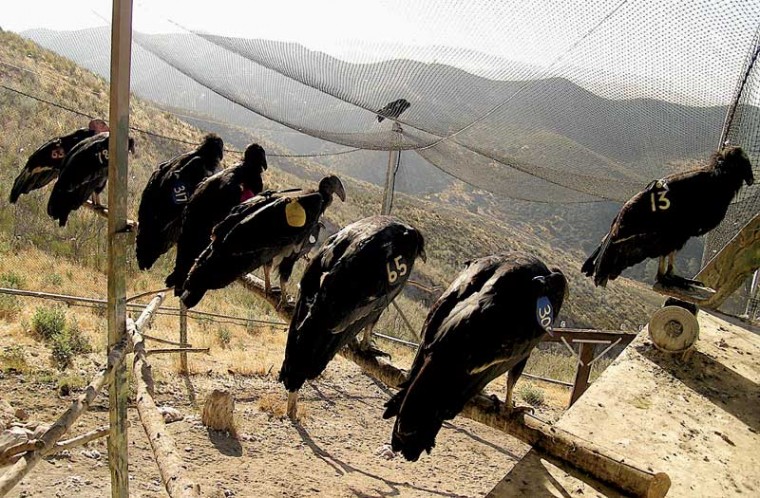Hollister
– Pinnacles National Monument is inviting the public to witness
its fourth California condor release Saturday morning, one day
after the anniversary of the last endangered bird being taken into
captivity 20 years ago.
Hollister – Pinnacles National Monument is inviting the public to witness its fourth California condor release Saturday morning, one day after the anniversary of the last endangered bird being taken into captivity 20 years ago.
After the condor population fell to just 22 in the 1980s, federal wildlife biologists began capturing the birds in an effort to rehabilitate the endangered scavenger’s numbers. In 1987, all the condors had been taken into captivity and breeding programs were begun in California, Oregon, Arizona and Idaho.
Pinnacles National Monument became a condor reintroduction site in 2003 as a collaboration between the Pinnacles Partnership, the Ventana Wildlife Society and the U.S. Fish and Wildlife Society, said Carl Brenner, the park’s supervisor of interpretation and education.
“The program isn’t anything that can be undertaken by any one individual or organization,” Brenner said. “It’s a partnership.”
Brenner said the public is invited to the east side of the monument, where the birds will be released Saturday and free-flying condors can be seen in the area.
“It’s a great way, as families, we can go out and learn about the resources we have,” Brenner said.
Up to three condors could be released, adding to the 13 condors that call Pinnacles National Monument home, said Jim Petterson, a park wildlife biologist.
However, the number of condors actually released will be up to the birds, Petterson said.
The flight pen, which holds the five birds, has a door to a trap and another door to the outside world. When a condor flies from the pen to the trap, the door leading back to the pen will be closed and the door leading to the outside will open, Petterson said.
Petterson said the trap is used so that the condors will not associate being released with human interaction.
“They don’t really know why it happened or how it happened,” Petterson said. “They’re just free.”
The trap and flight pen are also used as a safety precaution.
“Anytime you have to go in and trap them, there’s risk of a bird injuring itself,” Petterson said.
The program has been a success, raising the total number of condors to 280 as of April 1, Brenner said. There have been 18 condors born in the wild in Arizona and California since 2004.
One of the condors to be released in Pinnacles was bred in the San Diego Wild Animal Park, Brenner said. The other four come from the World Center for Birds of Prey in Boise, Idaho.
Brenner said the recovery program takes care to mix the condor population as much as possible.
“It’s very closely monitored by the recovery program to keep the genetic pool at its highest level,” Brenner said.
The Pinnacles condor population also intermingles with a larger flock nearby at Big Sur.
“At any given time, odds are high that there will be birds from both flocks at both places,” Petterson said.
Michael Van Cassell covers public safety for the Free Lance. He can be reached at 831-637-5566 ext. 335 or mv*********@***********ws.com.










